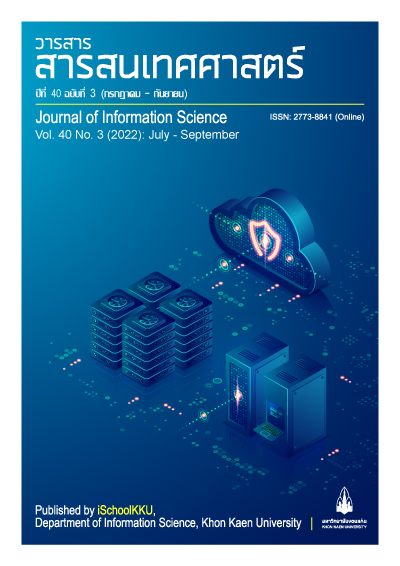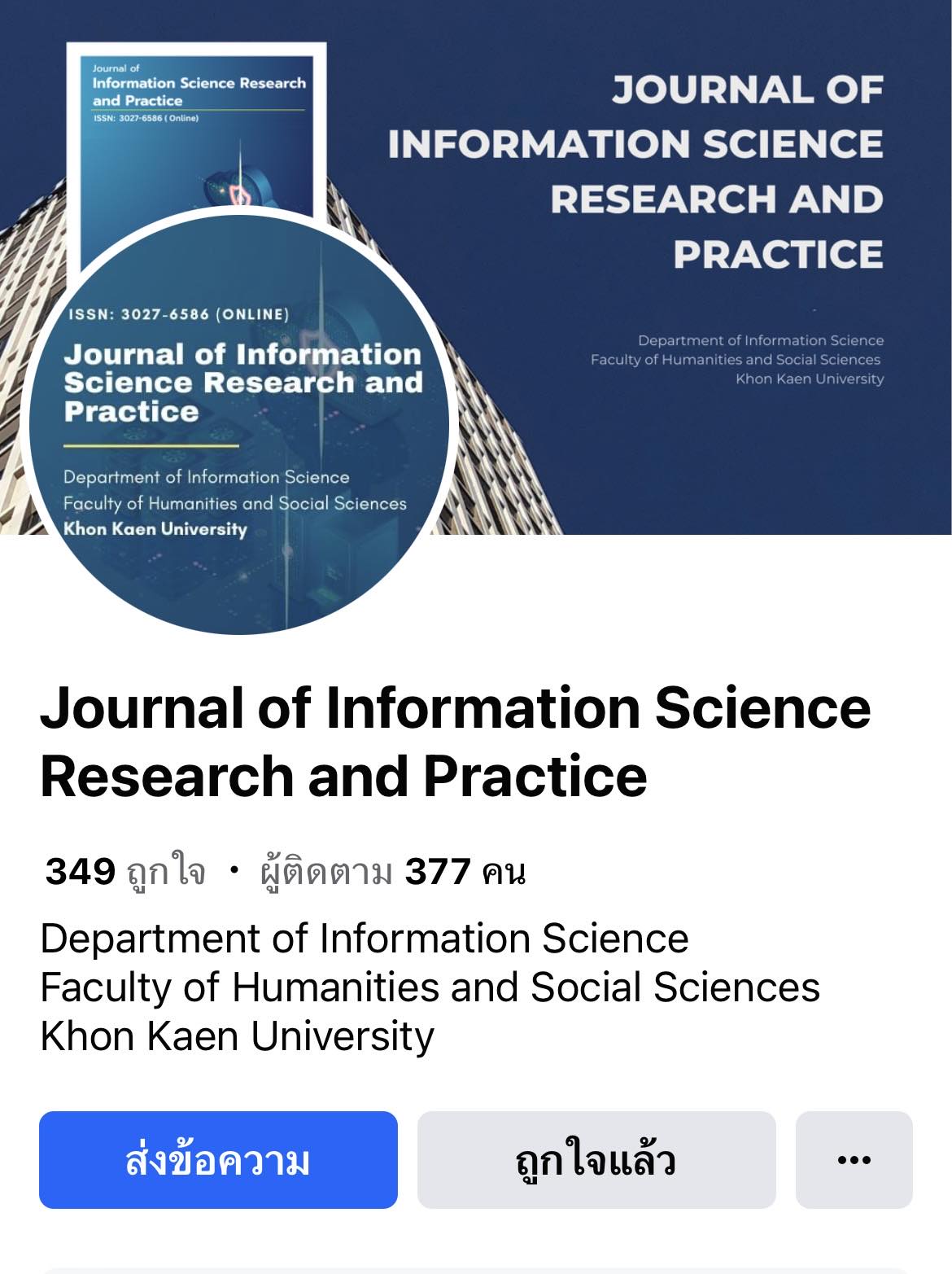Digital Relationship Through Multi-Sensory Activity for Homebound Older Adult
DOI:
https://doi.org/10.14456/jiskku.2022.16Keywords:
Digital relationship, Multi-sensory activity, Homebound older adult, ElectroencephalogramAbstract
Purpose of the study: This research article aimed to develop online digital activities for homebound older adults through the principle of an interface design for this age group and examined outcomes while performing and following online digital actives by using an electroencephalogram (EEG).
Methodology: The researchers used the main findings from a previous study to develop a mobile phone interface design and multi-sensory activity for homebound older adults and examine the result by measuring the relaxation via their brain waves (i.e., EEG) while using the designed application. The tangible results were detected through a mobile EEG device while performing and two weeks after using the developed application in 20 homebound older adults.
Main findings: The main finding suggested that the appearance or the size of the buttons, text, screen touchpoints, color contrast ratio, etc., is useful for up to 62.5 percent of homebound older adults to feel more relaxed during using this application. This design guideline works well with 75% of the homebound older adults who have a bachelor's degree or higher. Early older adults 60-69 years old accounted for 75%. Both males and females have the same capability and usability. After using the application for two weeks, older adults tended to be more relaxed, up to 85% percent in comparison to previous emotional state.
Applications of the study: The main findings and the testing procedure will help the homebound older adults have more confidence, easier accessibility to mobile phones, and expand this knowledge in various interface designs.
Downloads
References
Ahmed, S., Ahmed Yahya Al-Galal, S., Alshaikhli, I., & Alshaikhli, T. (2015). analyzing brainwaves while listening to quranic recitation compared with listening to music based on EEG signals. International Journal on Perceptive and Cognitive Computing, 1(1), 1-5.
Banga, C., & Weinhold, J. (2014). Essential mobile interaction design. Perfecting Interface Design in Mobile Apps: Addison-Wesley Professional.
Belkofer, C. M., Van Hecke, A. V., & Konopka, L. M. (2014). Effects of drawing on alpha activity: a quantitative EEG study with implications for art therapy. Art Therapy, 31(2), 61-68.
Buntatthong, K. (2015). Social network usage behavior and Bangkok older person’s satisfaction (In Thai). Master of Communication Arts Program in Global Communication, Bangkok University.
Cabinet and Royal Gazette Publishing Office. (2018). yutthasat chat phoso 2561-2580 [National strategy 2018-2037]. (In Thai). Retrieved 1 January 2021, from http://www.ratchakitcha.soc.go.th/DATA/PDF/2561/A/082/T_0001.PDF.
Chanwimalueng, W., & Polnigongit, W. (2018). A study of usability of elderly upon button size and shape on smartphone for creating fuzzy logic model. (In Thai). Journal of Science and Technology, 10(9), 121-135.
Cho, M., Kwon, S., Na, N., Lee, K.-p., & Suk, H. J. (2015). The Elders Preference for Skeuomorphism as App Icon Style. Proceedings of the 33rd Annual ACM Conference Extended Abstracts on Human Factors in Computing Systems. (899-904). Seoul: ACM.
Dankrang, P., & Thupkranon, R. (2019). Technology and information systems to enhance the independence and quality of life of the elderly in the coastal community. (In Thai). Retrieved 2 May 2021, from http://dspace.lib.buu.ac.th/handle/1234567890/4007
Duangpatra, P., Bunlikhitsiri, B., & Wongupparaj, P. (2021). The competency in using smartphones of the homebound older adult International Journal of Interactive Mobile Technologies, 15(9), 136-153.
Institute for Population and Social Research Mahidol University. (2021). Situation of the thai elderly 2020. Retrieved 2 June 2021, from https://bit.ly/3mhemgP
Johnson, J., & Finn, K. (2017). Designing user interfaces for an aging population: towards universal design. Morgan Kaufmann.
Kaur, C., & Singh, P. (2015). EEG Derived neuronal dynamics during meditation: . Progress and Challenges. (1-10). Advances in Preventive Medicine.
Kitreerawutiwong, K., & Kitreerawutiwong, N. (2018). The developing direction for long-term care giver in community. (In Thai). Journal of nursing and health care, 36(4), 15-24.
Kosiński, J., Szklanny, K., Wieczorkowska, A., & Wichrowski, M. (2018). An analysis of game-related emotions using Emotiv EPOC. 2018 Federated Conference on Computer Science and Information Systems (FedCSIS). (913-917). Poznań: Poland.
Lagopoulos, J., Xu, J., Rasmussen, I., Vik, A., Malhi, G., Eliassen, C., Arntsen, I., Saether, J., Hollup, S., Holen, A., Davanger, S., & Ellingsen, Ø. (2009). Increased theta and alpha EEG activity during nondirective meditation. The Journal of Alternative and Complementary Medicine, 15(11), 1187-1192.
Lee, D. J., Kulubya, E., Goldin, P., Goodarzi, A., & Girgis, F. (2018). Review of the neural oscillations underlying meditation. Frontiers in Neuroscience, 12(178), 1-7.
Mauss, I. B., & Robinson, M. D. (2009). Measures of emotion: a review. Cognition and Emotion, 23(2), 209-237.
National Statistical Office. (2018). Report on the 2017 survey of the older persons in Thailand.
Pakaiya, N. (2009). Institutional Long-term Carefor Older Persons. (In Thai). Retrieved 1 January 2021, from https://kb.hsri.or.th/dspace/bitstream/handle/11228/2544/hs1573.pdf?sequence=3&isAllowed=y
Polsorn, K. (2012). kitchakam nantha na kan bambat thanglueak nueng nai kan chuai yiaoya phu sung ayu [Recreational Therapy is an Alternative to Heal the Elderly]. (In Thai). Journal of faculty of physical education, 15(2), 1-6.
Ramirez, R., & Vamvakousis, Z. (2012). Detecting emotion from EEG signals using the emotive epoc device. International Conference on Brain Informatics. (175-184). Berlin, Heidelberg.
Ritthiti, N. (2021). The health promotion model for prevention of mental health problems of the elderly in community. Journal of Public Health and Health Education, 1(3), 1-20.
Sapa, S., Supawan, S., & Boonwatthanaku, C. (2020). A model for organizing recreational activities to develop adaptability of the elderly in Mueang district, Udon Thani province. STOU Education Journal, 13(2), 145-156.
Siamrath. (2019). kromsukkapapjit tingseow kay kow kar tow tai tee chee khon lean bab rom kwan pung! [Department of mental health Ding the media selling suicide news frequently pointing out that imitators smoked!]. (In Thai). Retrieved 1 January 2021, from https://www.dmh.go.th/news-dmh/view.asp?id=29911
Suhaimi, N. S., Mountstephens, J., & Teo, J. (2020). EEG-based emotion recognition: a state-of-the-art review of current trends and opportunities. Computational Intelligence and Neuroscience, 2020, 2020, 1-19.
Tamreoungit, I., & Chaisuwan, B. N. (2020). Active aging of elderly reinforcement through young happy’s activities and participation of elderly. Journal of communication and innovation NIDA, 7(2), 61-79.
Tanhan, P. (2016). Mobile phone application development for older adults. (In Thai). EAU Heritage Journal Science and Technology, 10(3), 55-62.
Tapow, S., & Inkhumhang, M. (2016). The development of homebound elderly in sub-district health promoting hospital. Journal of Nursing and Health Research, 17(1), 109-120.
Tepklang, C. (2019). The development of elderly depression surveillance and caring system in out patient department of Ubonratana Hospital, KhonKaen province Mahasarakhum Hospital Journal, 16(1), 70-77.
Trakulsithichoke, S., & Suwan, A. (2016). Effects of a cognitive stimulation program on the cognitive abilities and ability to perform the activities of daily living in elders who are at risk of or have dementia. Thai Red Cross Nursing Journal, 9(2), 145-158.
Yothikarn, W. (2020). The activities reinforcing value and happiness of the elderly in elderly schools. Journal of social synergy, 11(2), 37-53.








